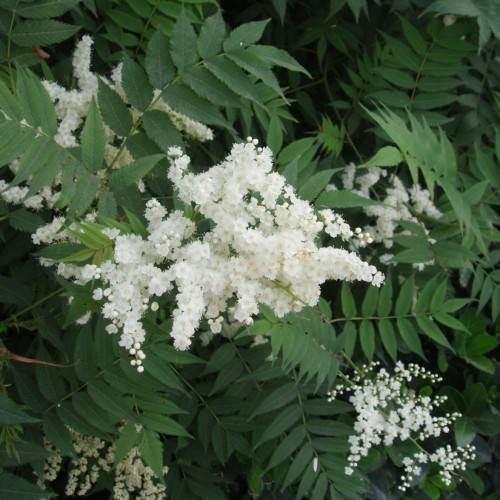
false spiraea
Sorbaria sorbifolia
Cycle:
Perennial
Watering:
Average
Hardiness Zone:
2 - 8
Flowers:
Flowers In Summer
Sun:
Full sun, Part sun/part shade
Soil:
Acidic, Well-drained
Fruits:
Fruits In Summer Ready In Fall
Leaf:
Yes
Growth Rate:
High
Maintenance:
Moderate
Drought Tolerant:
Yes
Salt Tolerant:
Yes
Invasive:
Yes
Care Level:
Medium
watering
False spiraea, also known as False Spirea or FalseGoat's Beard, should be watered at least once a week during the growing season (April – October). Aim to keep the soil around the plant evenly moist, but not soggy. Water around the base of the plant, avoiding the foliage if possible. As plants are drought tolerant, if the soil appears to be drying out, water more frequently. During the winter, water less frequently, about every 2 to 3 weeks; the amount of water will depend on the amount of precipitation.
sunlight
False spiraea (Sorbaria sorbifolia) is an upright shrub that prefers partial to full sun exposure. During the spring and summer months, false spiraea should receive 4 to 6 hours of direct sunlight each day. Once the cooler fall and winter months arrive, the shrub should receive 2 to 4 hours of direct sunlight each day. It should also be kept in an area with bright indirect light for the remainder of the day. In addition, during the winter, extra protection should be provided from wind and extreme cold temperatures.
pruning
False spiraea (Sorbaria sorbifolia) should be pruned when growth begins in the spring. Pruning should focus on removing any dead or diseased branches and limbs, as well as any overly-long branches. Prune the false spiraea to the desired size and shape, making sure not to prune more than 1/3 of the total plant. Be sure to make your cuts at an angle, slightly outside of the bud so as to not damage it. Pruning too much or too often may reduce flowering.
